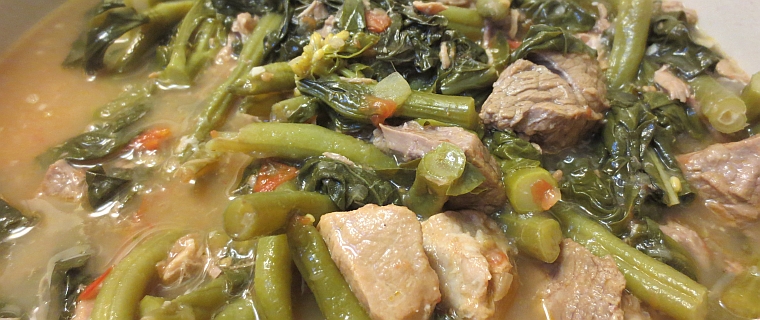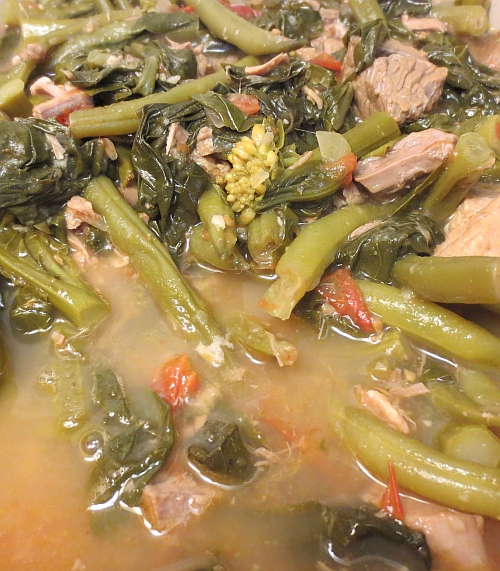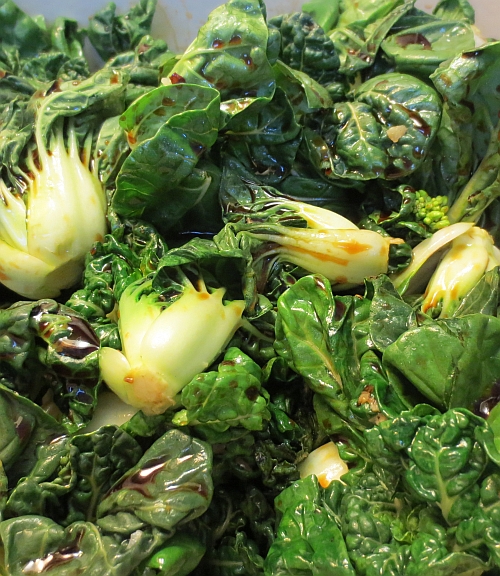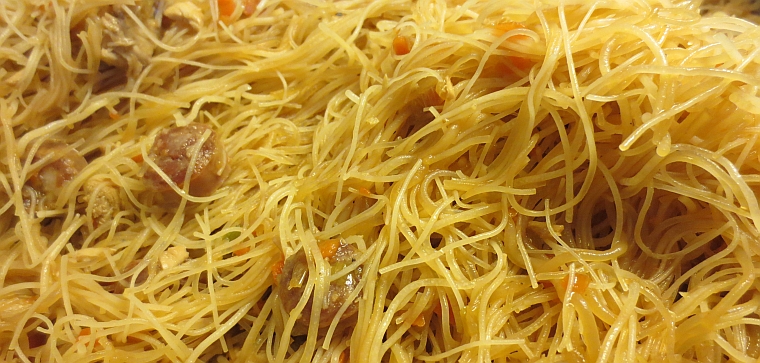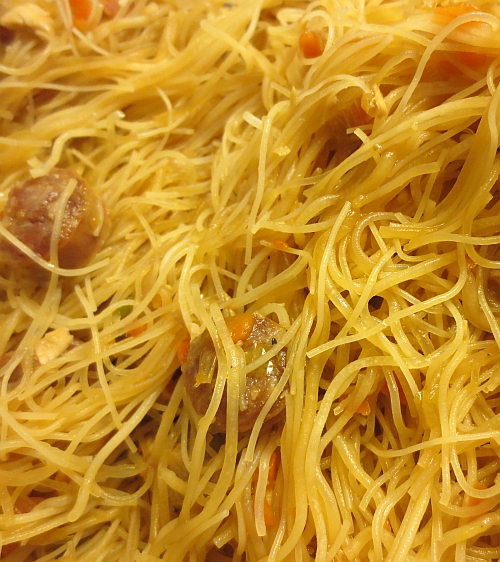The low-key celebration for my Dad’s birthday consisted of a traditional Filipino dinner, cooked by yours truly – and given the bursting blossoms of the baby bok choy, it arrived just in the nick of time. The main event was a new recipe I was giving a whirl – a sort of bitter beef stew officially christened ‘Sinigang na carne’. The recipe seemed simple enough (though I did need to seek out the Asian Supermarket to get the Tamarind-based seasoning packet for the Sinigang.)
Here’s the recipe if you want to try it out – as I mentioned, there is a bitter element to the dish, which I found refreshing, but may not be for everyone:
1 Tbsp. olive oil
1 tomato, diced
½ onion, diced
3 garlic cloves, minced
½ lb beef brisket, cut into chunks
½ lb pork chunks
¾ teaspoon salt (or to taste)
Pepper to taste
6 oz. bok choy and/or Chinese broccoli cut into large chunks 1-2 inches (2-3 cups)
2 white radishes, thickly sliced
10 oz. string beans
Packet of Sinigang tamarind base stew seasoning
1 teaspoon lemon juice (or kalamansi if avail.)
Saute onion, garlic, and tomatoes in hot oil until onion browns.
Add beef, pork, and enough water (or rice wash) to cover meat entirely (about 7-8 cups water). Bring to boil, lower heat, and simmer until meat is tender (about 2 hours).
Add salt and seasoning packet, bring to boil for ten minutes.
Simmer, and add bok choy/Chinese broccoli and radishes.
Add more water if necessary, and the string beans. Simmer until tender.
Before serving, add lemon juice. Serve with white rice.
Please note, I upped the portions for this as it was for a larger number of people, particularly on the meat side, so don’t be afraid to play around with it. I also chose fresh beans over frozen (as they are still in wonderful season) and used only Chinese broccoli, which provided the perfect note of bitterness. Adhere strictly to the times, as anything less may result in less tender meat, and that’s one of the best parts of this dish.
The baby bok choy was given the simple side treatment (here it is just before full wilting). It begins with a heady mix of ginger and garlic sauteed in a bit of olive oil and sesame oil – that alone will make anyone’s kitchen smell like it knows what it’s doing. Add to that some soy sauce and crushed red pepper flakes for heat, and you have an easy, if potent, side dish. I got that recipe from the New York Times, where it was originally printed next to the one I’m currently using for the chicken adobo. What the latter lacks in photogenic properties, it more than makes up for in taste. The key is the rice vinegar and coconut milk marinade, but the trick is the addition of three bay leaves. It seems like such a little, unimportant part, but it makes all the difference.
Rounding out the meal was a large pot of pancit, cooked in the manner my Mom taught me ~ two large bunches of rice noodles, soaked until soft, chopped chicken and pork (I boiled these for tenderness), green onions and carrots for color and flavor, Chinese sausage, a cup or so of chicken stock, salt & pepper to taste, and then a liberal dousing of soy sauce. This is a recipe that demands a few attempts before you find the best way to do it to your liking. This time around it helped keeping it refrigerated overnight, as the noodles upon first assembly were a little too firm. If leaving it in the fridge, I find it helpful to err on the watery side of things to insure that the noodles stay moist.
All of the above were served with that Filipino staple – a heaping bowl of steaming jasmine rice – and a bit of Pan de Sol. It made more than enough for six people, with leftovers all around – and is the perfect Fall dinner for when the nights start going cool.
Back to Blog

